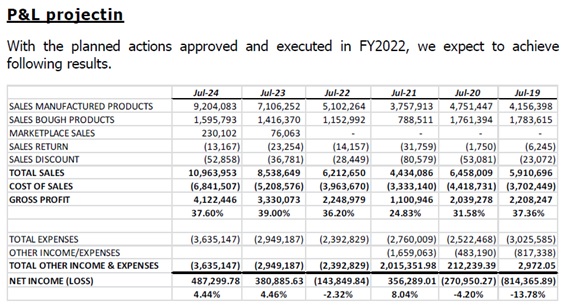Business success is not simply a matter of chance but a result of deliberate and well-executed strategies. Strategic planning and budgeting serve as the guiding lights for organizations, offering a roadmap to navigate challenges, seize opportunities, and achieve long-term growth. In this article, I will explain the importance of strategic planning and budgeting and how they collectively pave the way for business success.
The Foundation of Strategic Planning
Strategic planning involves the meticulous process of defining an organization’s vision, mission, and long-term goals. It’s about aligning every facet of the business towards a common purpose, ensuring that every action taken contributes to achieve the organization’s goals. These are the five stages of a strategic plan..
Vision and Mission: A strong vision and mission statement provide clarity and direction to the entire organization. They outline the organization’s purpose, values, and aspirations, acting as a North Star that guides decision-making.
SWOT Analysis: Conducting a SWOT (Strengths, Weaknesses, Opportunities, Threats) analysis allows businesses to assess their internal strengths and weaknesses and understand external opportunities and threats. This analysis informs strategic choices and helps in capitalizing on strengths and addressing weaknesses.
Goal Setting: Setting clear, specific, measurable, achievable, relevant, and time-bound (SMART) goals is integral to strategic planning. These goals serve as milestones and benchmarks to measure progress.
Market Research: Understanding market trends, customer behavior, and competitive landscapes allows organizations to define the strategic sales goals and strategies.
Strategic Initiatives: The final stage of the strategic plan, once you have defined vision-mission, SWOT matrix, market conditions, and strategic goal, is to identify the key initiatives, such as market expansion, product development, or operational improvements.
The Role of Budgeting
Strategic planning and budgeting goes hand in hand, translating high-level strategic goals into actionable financial plans. It provides a comprehensive financial framework that allocates resources efficiently and monitors financial performance. These are the fundamentals of a budgeting plan.
Resource Allocation: Budgeting helps allocate resources (financial, human, and material) effectively to support strategic initiatives. It ensures that funds are channeled to priority areas that drive growth.
Cost Management: A well-structured budget enables organizations to control costs, eliminate wasteful spending, and optimize resource utilization.
Performance Measurement: By comparing actual financial results with budgeted figures, organizations can track their progress towards strategic goals and identify any deviations that need corrective action.
Forecasting: Budgeting includes forecasting future financial performance based on historical data, long term goals, and anticipated changes.
Flexibility: Budgeting planning allows for flexibility in resource allocation, making it possible to reallocate funds as priorities shift or unexpected challenges arise.
Strategic Plan and budgeting: A Synergistic Approach
Strategic planning and budgeting are intertwined processes that complement each other. Strategic plans provide the context and direction for budgeting decisions, while budget provides the financial means to execute strategic initiatives. Together, they create a roadmap that guides the organization towards success. The figures below are an example of some of the output of a strategic plan combined with financial projections.

Strategic Planning and Budgeting Monitoring and Adjustment
One of the critical junctions where strategic planning, budgeting, and effective execution converge is in the process of monitoring and adjustment. Activation of strategic plans and the execution of budgets require constant monitoring of Key Performance Indicators (KPIs). By regularly assessing KPI performance against predetermined targets, organizations can identify discrepancies and trends, enabling them to make informed adjustments to both, strategic initiatives and budget allocations. This continuous feedback loop ensures that the organization remains agile, responsive, and capable of adapting its strategies and resource distribution to optimize outcomes and stay on course toward achieving its long-term objectives.
How Promoting USA Can Help
Promoting USA understands the critical importance of strategic planning and budgeting for business success. With our expertise, we offer tailored solutions that guide organizations through the intricacies of these processes. From defining a clear vision and mission to creating comprehensive budgets that align with strategic goals, our team ensures that your organization’s efforts are strategic, focused, and financially sound. Let us be your partner in shaping a path to success through strategic planning and budgeting. If you want to learn more about how we can help you with big retailers, give us your information to schedule a meeting.
I hope this article on strategic planing has been helpful to you. I will continue to post information related to trade channel management, general economy and market trends. If you are interested in this article or want to learn more about Promoting USA, please subscribe to stay updated on future articles.
Subscribe to Promoting USA blog

